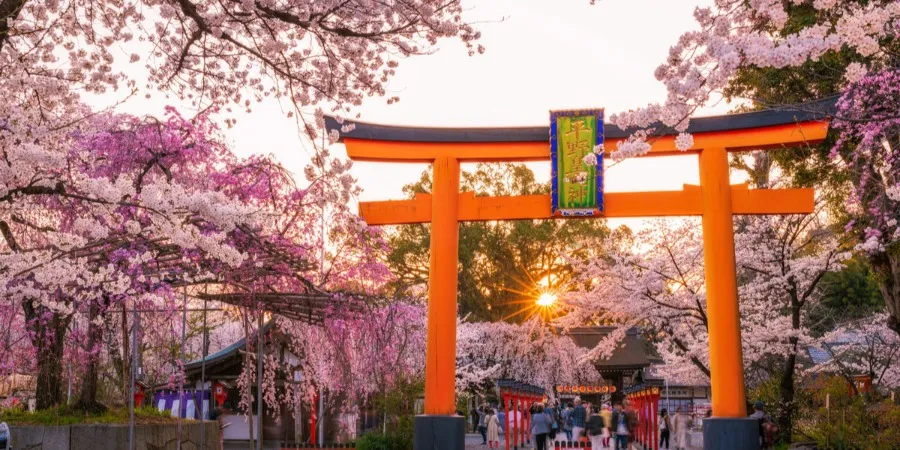All you need to know about the Japanese Hanami culture
Spring might just be the prettiest season in Japan as the country is covered in a blanket of shades of pink by the blooming cherry blossoms.

Thus, thousands of tourists from all over the world, as well as those Japanese living all across the country, would flock to the streets of Japan to admire the beauty of these flowers. Known as “Hanami/花見” with “hana” meaning flower and “mi” meaning to look at, this sure is an event not to miss during this period.
As the Hanami season is approaching, in this article, GoEMON will guide you through everything you need to know about this special Japanese tradition so that you can be prepared and enjoy it to the fullest!
1. The history of Hanami
Hanami dates back to the 8th century (701 - 794) of the Nara period. At first, it started as a tradition of admiring ume (plum) trees. However, by the Heian period 9794 - 1185), cherry blossom “sakura” trees started to become more popular, and thus people gradually switched from admiring ume trees to sakura trees instead. Thus, the “hana” in Hanami can refer to both cherry blossoms and plums, even though the latter is much less common.
Traditionally, Hanami was a special occasion for the aristocrats to enjoy the transient beauty of nature and express their feelings through poetry and music. Hence, you can find many Japanese art illustrating this practice. The viewing of sakura flowers was later adopted by the samurai and commoners and became a national phenomenon. Hanami now is an indispensable part of Japanese culture and is enjoyed by people regardless of age, gender, social class, and occupation in Japan.
2. The significance of Hanami in Japanese culture
The importance of Hanami to the Japanese and the country’s culture is immeasurable. To foreigners, Hanami may just be a flower-viewing party. However, for the Japanese, hanami’s meaning goes much, much deeper than that: it is a way to spend quality time with your loved ones, appreciate the beauty of nature and the moving of time and seasons, and reflect on the impermanence of life.
Cherry blossoms are utterly breathtaking and beautiful, but the flowers only last for a few weeks before falling. Thus, when admiring the beauty of cherry blossoms, there exists a sense of sadness as the dazzling beauty in front of our eyes will disappear soon. This sensitivity to beauty is illustrated in the Japanese idiom “Mono no Aware.” This makes Hanami all the more meaningful and special.
3. How to Hanami
Below are the three common ways to celebrate hanami in Japan:
- Going on picnics at parks
The most common method to celebrate hanami in Japan is to go on a picnic under the flowering sakura trees with your loved ones. Sometimes, these picnics can develop into parties that go on until late at night. You can bring your own food and drinks, or buy them from nearby shops and food stalls.
These parks can be extremely crowded, especially during weekends and when the flowers are in full bloom, so make sure to go early if you want to secure a good spot!
- Going to cherry blossom festivals
This is also another famous way to celebrate the blooming of cherry blossoms in Japan. They are held in various locations all over Japan. There are no fixed dates for these festivals as the blooming periods for cherry blossoms vary significantly depending on the region and the weather. However, the flowers usually start blooming from around late March to early May, from the south where the temperature is higher to the north where the weather is much cooler. These festivals are the perfect location for those who want to enjoy the beauty of the cherry blossom while also getting to try out traditional Japanese foods, games, and performances.
- Going to Onsens
Another option is to go to onsens during the Hanami period. What’s better than being able to appreciate the dazzling beauty of the cherry blossoms while destressing and submerging yourself in the hot spring water?
Are you guys ready for the Hanami season, because we sure are!
Don’t forget to follow GoEMON Global for the latest updates on life in Japan!